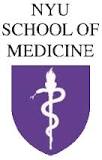Acoustic Stimulation for Seizure Suppression
| Status: | Enrolling by invitation |
|---|---|
| Conditions: | Neurology, Epilepsy |
| Therapuetic Areas: | Neurology, Other |
| Healthy: | No |
| Age Range: | 18 - 60 |
| Updated: | 10/26/2018 |
| Start Date: | August 17, 2017 |
| End Date: | March 17, 2019 |
Low Frequency Acoustic Stimulation During Sleep for Seizure Suppression
The objective of this study is to test the feasibility and physiological effect of
low-frequency (1 Hz) acoustic stimulation delivered during nocturnal NREM sleep in epilepsy
patients. The long-term goal is to develop this protocol for daily, long-term use in a home
setting, for nocturnal seizure and IED suppression
low-frequency (1 Hz) acoustic stimulation delivered during nocturnal NREM sleep in epilepsy
patients. The long-term goal is to develop this protocol for daily, long-term use in a home
setting, for nocturnal seizure and IED suppression
1. To test the feasibility of wearing an earphone system delivering acoustic stimulation
during a night of sleep in adult epilepsy patients monitored in an inpatient unit.
2. To determine the acute physiological effects of low-frequency acoustic stimulation on
interictal epileptiform discharge (IED) frequency during NREM sleep in adult patients
with epilepsy in an ambulatory setting.
3. To determine the feasibility of applying low-frequency acoustic stimulation in a
long-term home setting in adult epilepsy patients with frequent nocturnal seizures.
during a night of sleep in adult epilepsy patients monitored in an inpatient unit.
2. To determine the acute physiological effects of low-frequency acoustic stimulation on
interictal epileptiform discharge (IED) frequency during NREM sleep in adult patients
with epilepsy in an ambulatory setting.
3. To determine the feasibility of applying low-frequency acoustic stimulation in a
long-term home setting in adult epilepsy patients with frequent nocturnal seizures.
Inclusion Criteria:
- 18-60 years old
- Able to provide informed consent
- MOCA ≥26
- Fluent in English
- Frequent nocturnal IEDs (≥ 10% of the sleep record)
- Monitored on the adult epilepsy monitoring unit (EMU, for Aim 1 only) Additional
inclusion criteria for Aim 3
- Frequent nocturnal seizures (≥1 per week)
Exclusion Criteria:
- Hearing impairment
- Diagnosis of a sleep disorder (sleep apnea, periodic limb movements of sleep, or other
medical conditions with frequent arousals)
- Psychoactive medication use (other than AEDs, for example SSRIs, antipsychotics, BDZ,
or stimulants)
- Seizures ≤ 24 hours prior to study.
- Alcohol or recreational drug use in the 24 hours prior to the study
- BMI ≥ 30
- MOCA <26
- History of recent travel across time zones within the 1 month prior to study
activities
- Shift work for 1 month prior to study activities Additional Exclusion Criteria for Aim
3
- No medication changes at least 1 month before study, and during 3 months of study
activities
We found this trial at
1
site
550 1st Ave
New York, New York 10016
New York, New York 10016
(212) 263-7300

Principal Investigator: Anli Liu, MD
New York University School of Medicine NYU School of Medicine has a proud history that...
Click here to add this to my saved trials